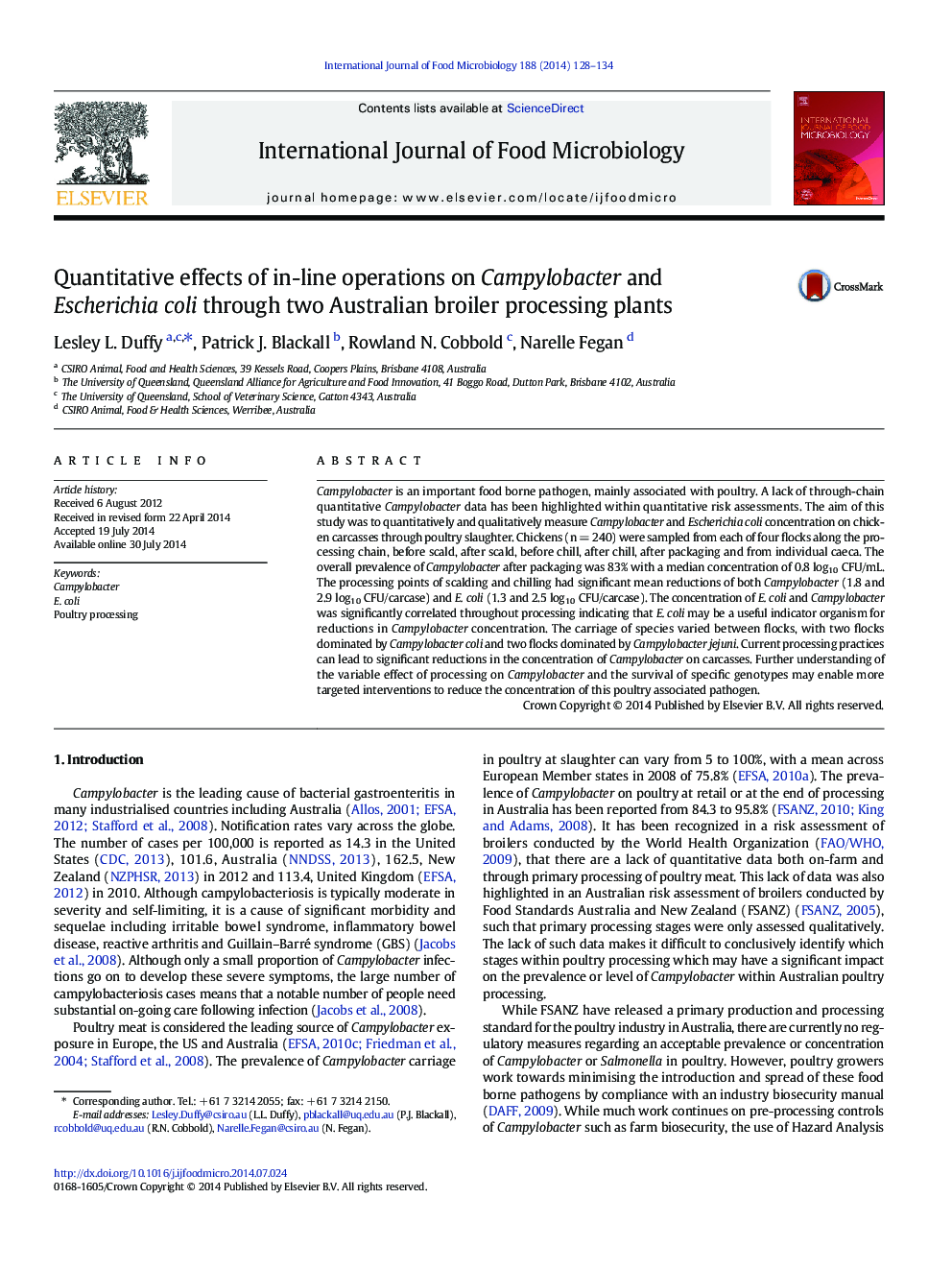| Article ID | Journal | Published Year | Pages | File Type |
|---|---|---|---|---|
| 4366834 | International Journal of Food Microbiology | 2014 | 7 Pages |
•Quantitative data on Campylobacter and E. coli in broilers through processing•Use of E. coli as an indicator of process effects on Campylobacter•Scalding and chilling decrease concentration of organisms.•Caecal concentration potentially not as important as processing control•Potential different survival of C. jejuni and C. coli through processing
Campylobacter is an important food borne pathogen, mainly associated with poultry. A lack of through-chain quantitative Campylobacter data has been highlighted within quantitative risk assessments. The aim of this study was to quantitatively and qualitatively measure Campylobacter and Escherichia coli concentration on chicken carcasses through poultry slaughter. Chickens (n = 240) were sampled from each of four flocks along the processing chain, before scald, after scald, before chill, after chill, after packaging and from individual caeca. The overall prevalence of Campylobacter after packaging was 83% with a median concentration of 0.8 log10 CFU/mL. The processing points of scalding and chilling had significant mean reductions of both Campylobacter (1.8 and 2.9 log10 CFU/carcase) and E. coli (1.3 and 2.5 log10 CFU/carcase). The concentration of E. coli and Campylobacter was significantly correlated throughout processing indicating that E. coli may be a useful indicator organism for reductions in Campylobacter concentration. The carriage of species varied between flocks, with two flocks dominated by Campylobacter coli and two flocks dominated by Campylobacter jejuni. Current processing practices can lead to significant reductions in the concentration of Campylobacter on carcasses. Further understanding of the variable effect of processing on Campylobacter and the survival of specific genotypes may enable more targeted interventions to reduce the concentration of this poultry associated pathogen.
